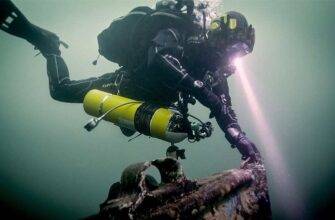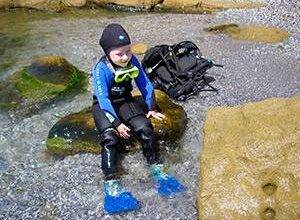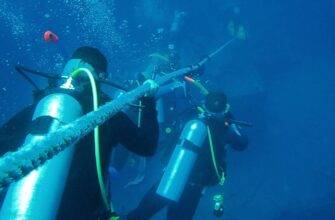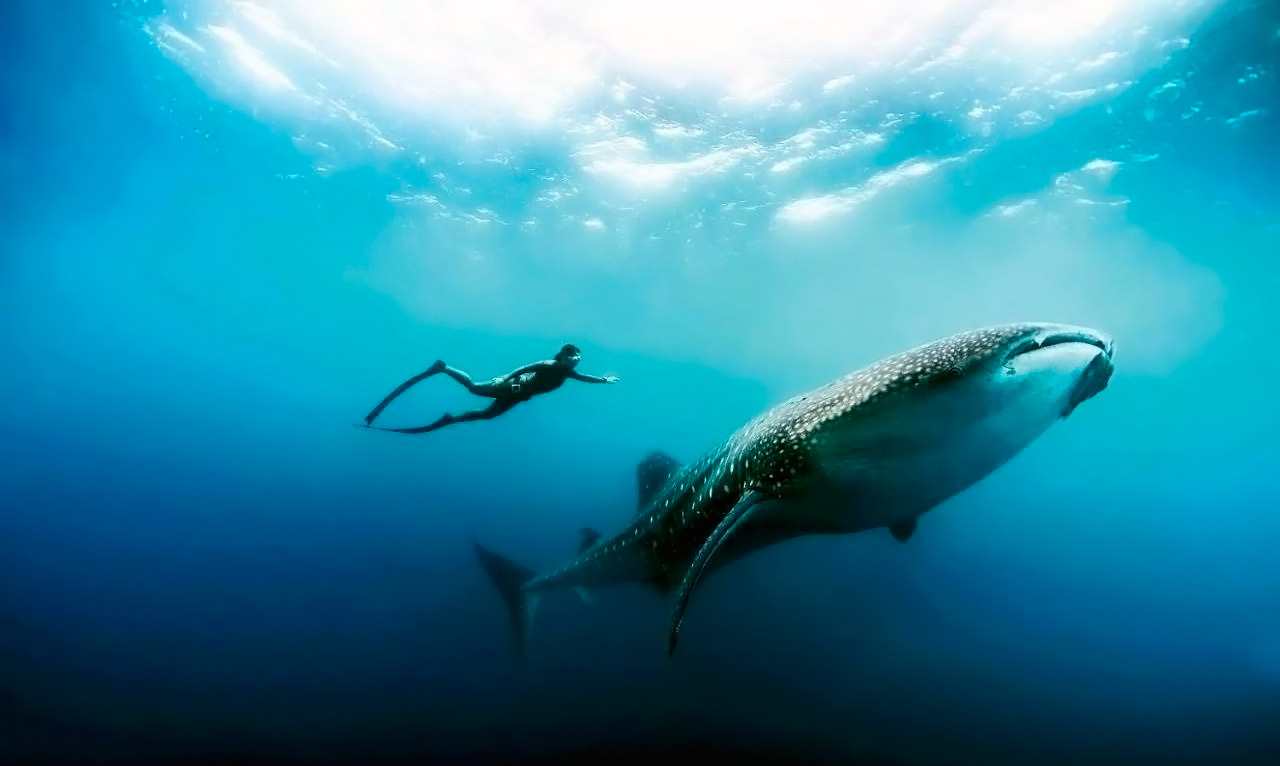
If you want to know what freediving is, read our article. Freediving is a special type of diving to depth with holding your breath. By using special techniques, the freediver engages his physiological resources, allowing him to extract the maximum possible from the dive.
Having emerged many centuries ago, rather as a necessity for diving, today freediving is recognized as a sport, a hobby and even as a special philosophy of life. And what do you know about this activity?
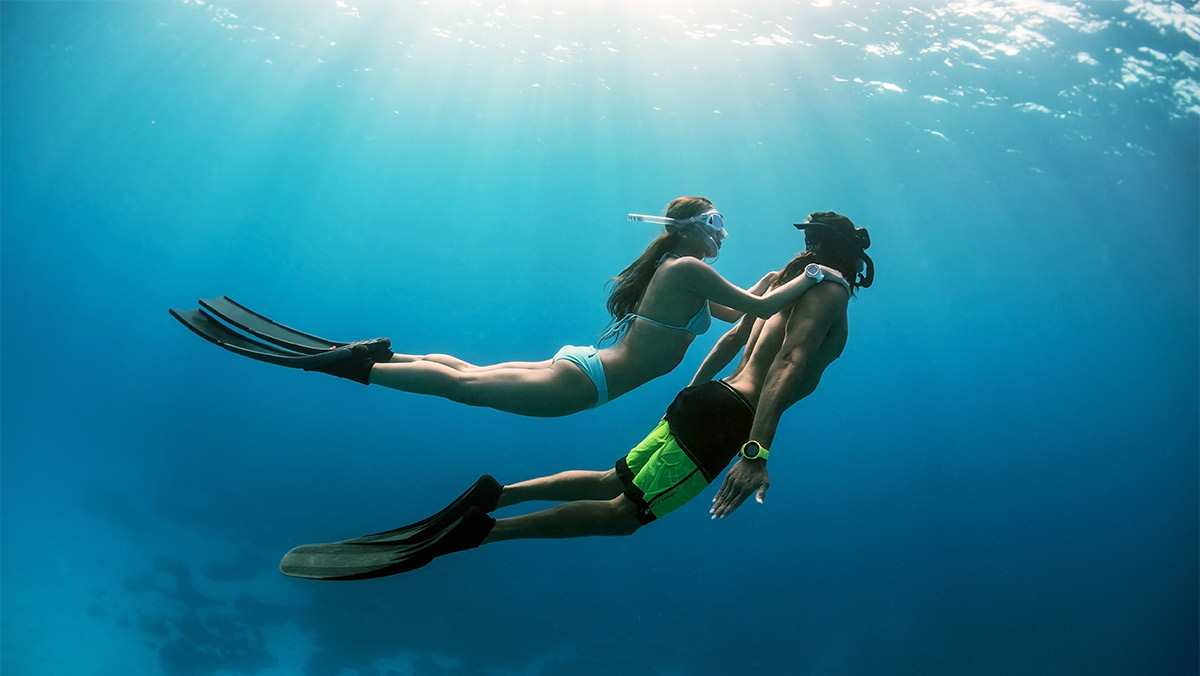
Freediving is a sport with a rich history
Freediving is such an ancient activity that it is impossible to say exactly when it appeared. It is known that in Ancient Greece, warriors dived with breath-holding without scuba diving to sabotage enemy ships. In Japan, there were divers fishing for pearls.
Even today in different parts of the world there are still peoples who have preserved the ancient customs that have become their cultural traits. Some of them do it for the tourists’ entertainment, and some of them do it for some domestic purpose. For example, in the Philippines there are still “sea gypsies” (Bajao), in Polynesia – pearl divers, in Japan – “man of the sea” (Ama divers).
Freediving depth records
The term ‘freediving’ itself was coined in the 20th century by Raymond Boucher. He holds the first record in freediving at a depth of 30 meters. He set it in 1949. It is not surprising that athletes soon appeared wishing to surpass this result. And there are those who started to succeed.
Later, Alberto Novelli and Ennio Falco broke the record of Boucher, setting a new limit of 40 meters. In 1960 it was broken by Enzo Mallorca who was able to dive to a depth of 49 meters. Six years later he demonstrated his improved skills, achieving 54 meters.
Amazingly, still in 1966, the Frenchman Jacques Paul breaks the Mallorca record, diving to a depth of 100 meters. Thereby he debunked the myth that at a depth of more than 50 meters the human chest would be simply crushed by the water column.
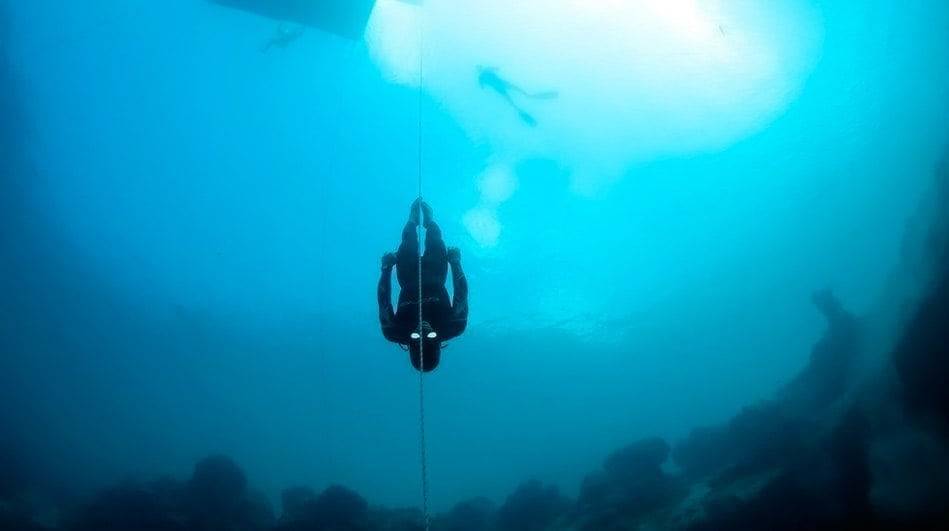
Types of freediving
There are three main types of freediving:
Amateur (recreational). Engaged in it, those who simply love the underwater world and its beauty, diving to depth. Sports. Its purpose – training in order to achieve new records, participation in competitions. Sportsmen-fridivers train constantly, pass the standards, get qualifications. Commercial.
This type of freediving is characterized by the fact that it is aimed at earning an income or some other benefit. This can include divers going down to the depths to collect seafood (pearls, shells, corals, etc.), instructors teaching freediving, guides for underwater swimmers, etc.
There are several disciplines in freediving. They can all be divided into two main groups – those practiced in the pool, and those conducted in open water.
Among those disciplines that are held in the pool, we can distinguish:
- STA (swimmer in the supine position under water holding his breath);
- DNF (immersion and forward movement without using the flippers);
- DYN (the technique corresponds to DNF, the only difference is that in this case monofinals or ordinary flippers are used).
Open water freediving is also represented by separate disciplines:
- CNF – a freediver dives to depth without flippers;
- CWT – the same as the previous version, but the dive is done with flippers;
- FIM – the dive is performed with the help of a rope, and the freediver uses only the force of his own hands to lift;
- VWT – the diver dives with a weighted weight (load);
- NLT – in this discipline there are no special restrictions (freediver dives and swims as he wishes).
In relatively large cities there are clubs that teach freediving for beginners. Anyone who likes diving, who wants to test their physiological capabilities and achieve personal records, choose this sport.
Body reflexes on which freediving is based
Freediving involves holding your breath while diving to depth. It is based on such reflexes of the human body:
Laryngospasm. The human respiratory system is designed in such a way that it is impossible to breathe when your face is submerged in water. Even if a freediver loses consciousness directly underwater, he is not in danger of drowning. When brought to the surface, it is often enough to blow on his face for breathing to resume. Bradycardia.
When submerged under water (even just the face) there is a slowing of the heart rhythm. This is possible only if the person is absolutely calm, relaxed and did not take caffeinated drinks or drugs shortly before the dive. There is even a world record for slowing the heart rate of a freediver – up to 6 times per minute. Vasoconstriction.
Due to the fact that the blood vessels narrow when diving in water, it allows you to lose as little energy and heat as possible at depth. Blood Shift. This mechanism is truly amazing, as it allows the freediver to dive to depths of more than 100 meters! When you reach the 40 meter mark, the diver’s blood begins to circulate in a small circle. This allows you to supply all the vital organs (brain, lungs and heart) while saving oxygen consumption.
The human organism is amazing and it seems that everything is provided in it in order to make safe dives. But you should not rely solely on unconditioned reflexes. A freediver must have important skills and abilities for diving to depth:
The ability to “blow”. Performing this procedure, even at shallow depths, helps to equalize the intra-ear pressure in order to prevent damage to the eardrum due to water pressure. Physical Preparation. The freediver’s muscular system should be trained. This will help to waste less energy and oxygen. A trained respiratory system. The lungs should be filled with as much air as possible.
Yogic breathing practices are good for this. Swimming technique. In order to move faster and more vigorously underwater, you need to learn proper swimming techniques. A freediver learns to eliminate unnecessary movements that consume a lot of energy and oxygen.
The ability to abstract from external and internal stimuli. When diving you need to be calm, detached, relaxed. At depth there is no place for anxiety, panic, unnecessary thoughts. All of them take away valuable energy and contribute to the rapid depletion of oxygen supply.
Peculiarities of training
For beginners it is difficult to form on their own such skills and abilities. The help of a professional is necessary. Freediving training conducted under the guidance of experienced trainers will allow you to comprehend the secrets of this difficult but so attractive science of deep diving.
Necessary equipment for freediving
In order to make dives underwater, you will need equipment. Not only the comfort of the freediver, but very often also his safety will depend on it.
What a person who is preparing to dive to depth should have:
Suit. It must be flexible, so as not to stiffen the movement, and at the same time dense, to protect the human skin from underwater creatures. Need to think about buying special socks and helmet (if they are not included in the finished set of the suit). Flippers. It is desirable if they will consist of different levels of hardness.
This will make swimming underwater comfortable. To be able to move as quickly as possible, it is better to choose flippers with a length of 90 cm and a 70-90cm paddle.
Mask and snorkel. They should not cause discomfort. Products made of high-strength and high-quality materials should be chosen. Other elements. These should include a belt with weights (should be easy to remove), a bright buoy with a rope (required in order to allow the diver to rest, as well as in case of an extreme situation – for easy search rescuers), clock-computer (for those who plan to set a record), underwater flashlight, knife.
The freediver’s health and life may very well depend on the right equipment and accessories.
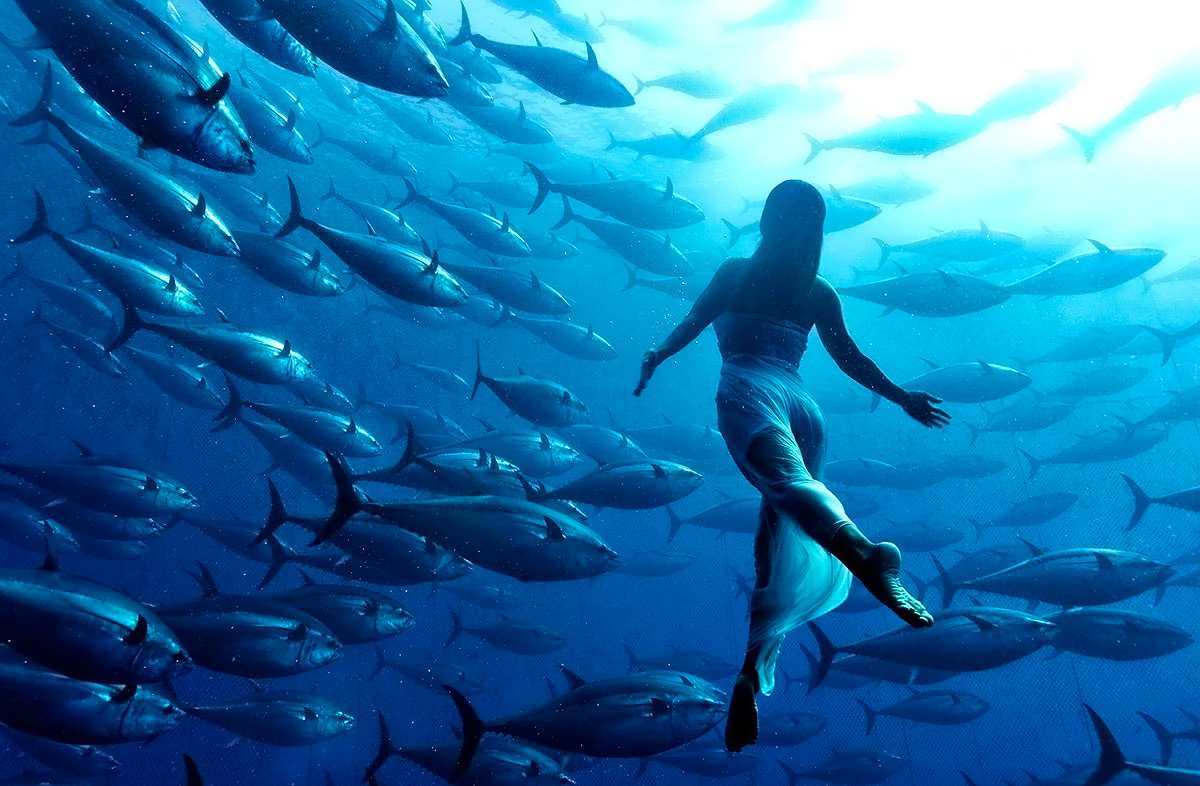
Contraindications and possible risks
Freediving is an extreme sport, so not everyone can engage in it. Contraindications can be divided into those that exclude any possibility of freediving, as well as those that are not strict restrictions.
Before you start your first freediving session, you should visit a number of medical specialists: neurologist, ENT, surgeon, dentist, cardiologist, ophthalmologist. They will conduct the necessary examinations and tests. And do not be lazy, because it may depend not only on the health, but also on the life of those who have decided to seriously engage in diving.
Freediving will be banned if there is at least one of these pathologies:
- asthma;
- heart, valve or aortic disease;
- damage to the respiratory organs of a chronic or mechanical nature;
- the presence of neoplasms of different origin and nature;
- mental illnesses;
- Chronic diseases of the ears.
It is also worth to highlight the diseases and conditions in which freediving is undesirable, but there are no strict restrictions:
- reduced hemoglobin levels;
- blood diseases;
- hypertension;
- malfunction of a limb or no limb at all;
- Diseases of internal organs that occur in a chronic form;
- pregnancy;
- Period of menstrual bleeding;
- runny nose.
Even if there are no special contraindications to freediving, but just before diving a person begins to feel general malaise, weakness, fatigue, it is better to postpone the lesson until the condition stabilizes.
The freediver must be prepared for the possibility of unforeseen situations that can lead to injury or dangerous conditions:
- Loss of consciousness due to hypoxia.
- Barotrauma resulting from pressure differences between the water column and the human body.
- Muscle failure (“samba”) developing due to oxygen deprivation.
- Decompression sickness. Characterized by the formation of bubbles in the blood, preventing the organs from getting the necessary nutrition.
Keep in mind that most freediver injuries are caused by “wrong” behavior underwater. There should be no fuss, excitement, or hurry. This is the only way to protect yourself from mistakes. That’s all the basic information about freediving. Now you know about this type of diving.
Read More:

